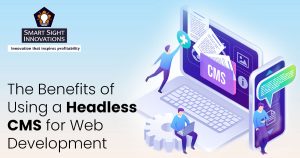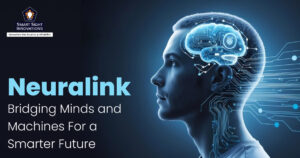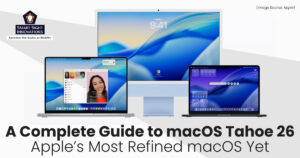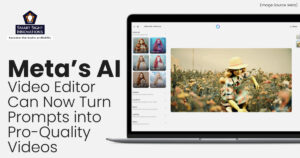 Content management system (CMS) is a software that creates, distributes, stores and alters the digital content of businesses on websites, without needing to hire developers with specialized technical knowledge. It’s similar to a database that can manage content in a simple application with search capabilities and publishing tools.
Content management system (CMS) is a software that creates, distributes, stores and alters the digital content of businesses on websites, without needing to hire developers with specialized technical knowledge. It’s similar to a database that can manage content in a simple application with search capabilities and publishing tools.
A headless CMS avoids front-end elements that control how the material is displayed to users and uses APIs to publish content virtually anywhere. Traditional CMSs frequently feature a unified architecture, which means that the front end (also known as the presentation layer, where the content is displayed) and the back end (where information is created and stored) are closely related.
Most websites and digital experiences created with traditional CMSs are first designed for desktop web browsers and then redesigned for mobile devices like smartphones and tablets. The main function of a traditional CMS was to manage content for websites, while modern customers engage and get information on many additional channels making the traditional system no longer viable for such customers.
Why Do You Need a Headless CMS?
Managing text-based, structured, multimedia information also means being able to share it over a variety of channels, including the web, e-commerce, mobile applications, wearable technology like smartwatches and interactive display systems in stores and malls. Additionally, the user, their location, language, tastes and behavior should all be taken into account when personalizing the content.
It needs to be detached and autonomous with a delivery method as feasible as possible. A headless CMS will help in decoupling the front-end part and deal only with the content management part.
This means that the web development team can choose their stack and can focus only on the UX and UI, without restrictions or special requirements. Thus minimizing the time to market and also the costs.
The majority of the headless CMS offers managed backends and hosted web applications which means the security, scalability and servers are taken care of for you. Though traditional CMSs have their benefits, the three major competitive advantages of headless CMS are:
- Providing a proofreading environment that is customized with advanced publishing techniques.
- Organized content that can be reused across several platforms such as a website, an app or print media.
- Controlled infrastructure with scaling and security.
Who Uses Headless CMS?
Many businesses use the headless CMS as the central platform that drives their complete digital experience across all platforms and devices. It helps them become flexible in connecting with customers at scale, acting fast on new market opportunities and streamlining content operations to enforce uniformity.
Mobile developers use headless CMS because the API enables them to freely send content from the same backend to iOS or Android. It may be advantageous for developers in terms of UX but small websites with few pages may not find it helpful.
Some sectors using a headless CMS include:
-
- Financial Services where headless CMS can personalize and present content to each customer as they depend on significant information to help them make some important decisions.
- Online Retailers, where, with the help of headless CMS, retailers can establish a personal connection with their customers and also carry out marketing efforts through multiple channels such as social media.
- Airlines, where the headless CMS provides clear, consistent and accurate communication.
- Websites and Web Apps, where headless CMS is compatible with three static site generators (that which automatically generates static HTML web pages) such as Gatsby, 11ty and Next. They are also compatible with modern JavaScript Frameworks such as React, Angular, etc.
Benefits of Headless CMS
The headless CMS has grown to be a well-liked option for marketers who want to provide omnichannel experiences across many customer touchpoints. Some of the benefits are:
1. Amazing Omnichannel Experiences
As omnichannel experiences are crucial in today’s competitive market, a headless CMS can help businesses deliver targeted content across several media. Omnichannel publishing is undoubtedly one of the key advantages of choosing a headless CMS. It can save data consumption by adjusting to the various screen widths of mobile devices and desktop computers, helping businesses give their users an immersive experience.
Consumers come in contact with a multitude of interfaces including digital signage, IoT smart devices, voice control UIs and mobile and laptop devices. A headless CMS makes it much simpler to distribute the material to each platform, saving content creators the time and effort of manually reformatting their work for several interfaces or publishing the same content multiple times.
2. Flexibility
Selecting a CMS is a flexible process that is influenced by a team’s technical skills, the website’s architecture and business objectives. As the headless CMS separates presentation from content, they combine the finest features of traditional CMS with headless architecture into a single platform.
Businesses are free to choose from the standard, headless or hybrid CMS solution that best suits their requirements. Developers too have a wide variety of front-end tool options as headless CMS is distributed via APIs.
They have the option to use Javascript in place of PHP or Ruby and so on. Without disrupting the CMS, you can swap out components of your stack or switch frameworks.
3. Speed
Headless CMS allows for incredibly quick content distribution, which can be done by using APIs and webhooks. Without the requirement for content rendering, marketers can effortlessly save, modify and publish content within a headless CMS platform.
Faster content distribution allows marketers to react more quickly to the audience’s changing needs, which is essential in the current digital environment. Moreover, projects can be completed more quickly because a single content item can be reused and merged with a variety of display outputs.
4. Scalability
Businesses would prefer to avoid the inconvenience and expense of constantly upgrading systems and platforms, every time a new project starts. Headless CMS is more scalable than traditional CMS due to its ability to manage massive data and quickly provide web pages.
This may help a website’s traffic and SEO, both of which are crucial for marketing. Additionally, there won’t be any downtime during maintenance as the backend and front ends are kept apart. You can upgrade or optimize your website without sacrificing performance.
5. High-Quality Software Architecture
A headless CMS is an excellent option for businesses building web platforms and services to achieve and build the best practice environment with the greatest levels of integrity and security. This is because a headless CMS can create a better software architecture from scratch.
6. Security
Websites are often vulnerable to attacks when the frontend and back end are closely connected. Hackers can get access to the back end and all of their sensitive data by overcoming security measures on the presentation layer. On the other hand, in headless systems, a single flaw may not always lead to a chain reaction that compromises the whole site.













